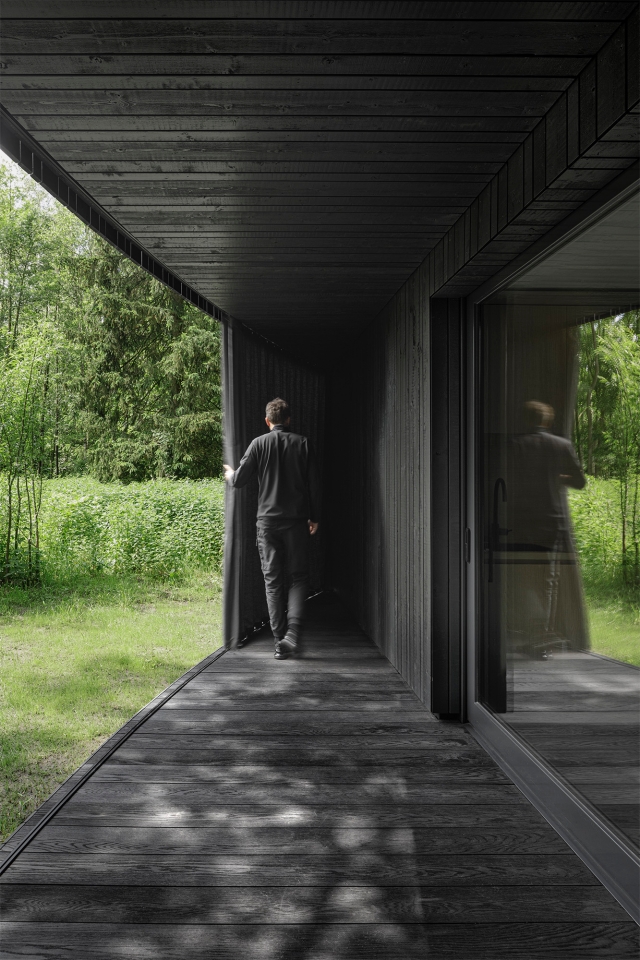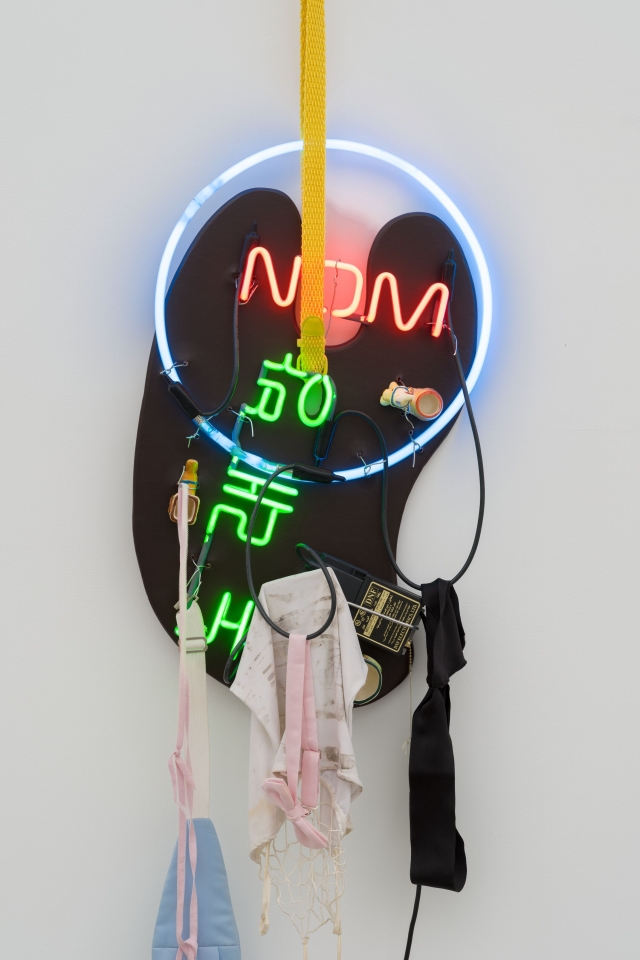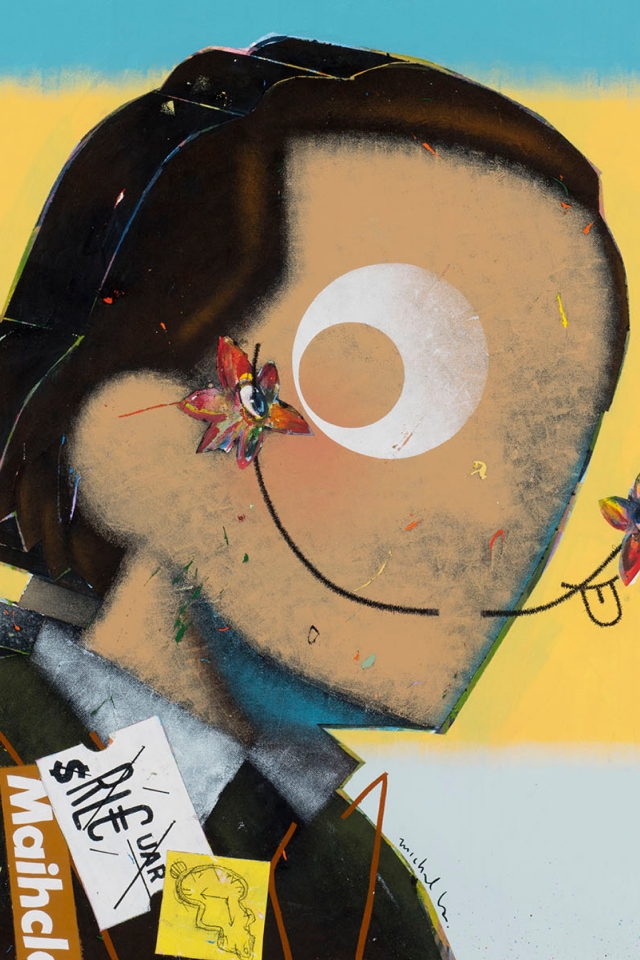Born in 1969, Matteo Pugliese is a prominent contemporary sculptor who has earned wide popularity in Europe during the last decade. A self-taught artist with a Modern Literature degree from the University of Milan, Pugliese has since 2001 dedicated himself to sculpture creation, by now he has had over thirty solo exhibitions in Italy and abroad. Pugliese’s figurative sculptures masterfully synthesise classical realism, contemporary sensibilities and revolutionary concepts. He keeps exploring new frontiers of contemporary sculpture through his unique language, combining classic materials like bronze and marble with modern elements, merging anatomical precision with expressive dynamism, and bridging personal emotions with universal values.
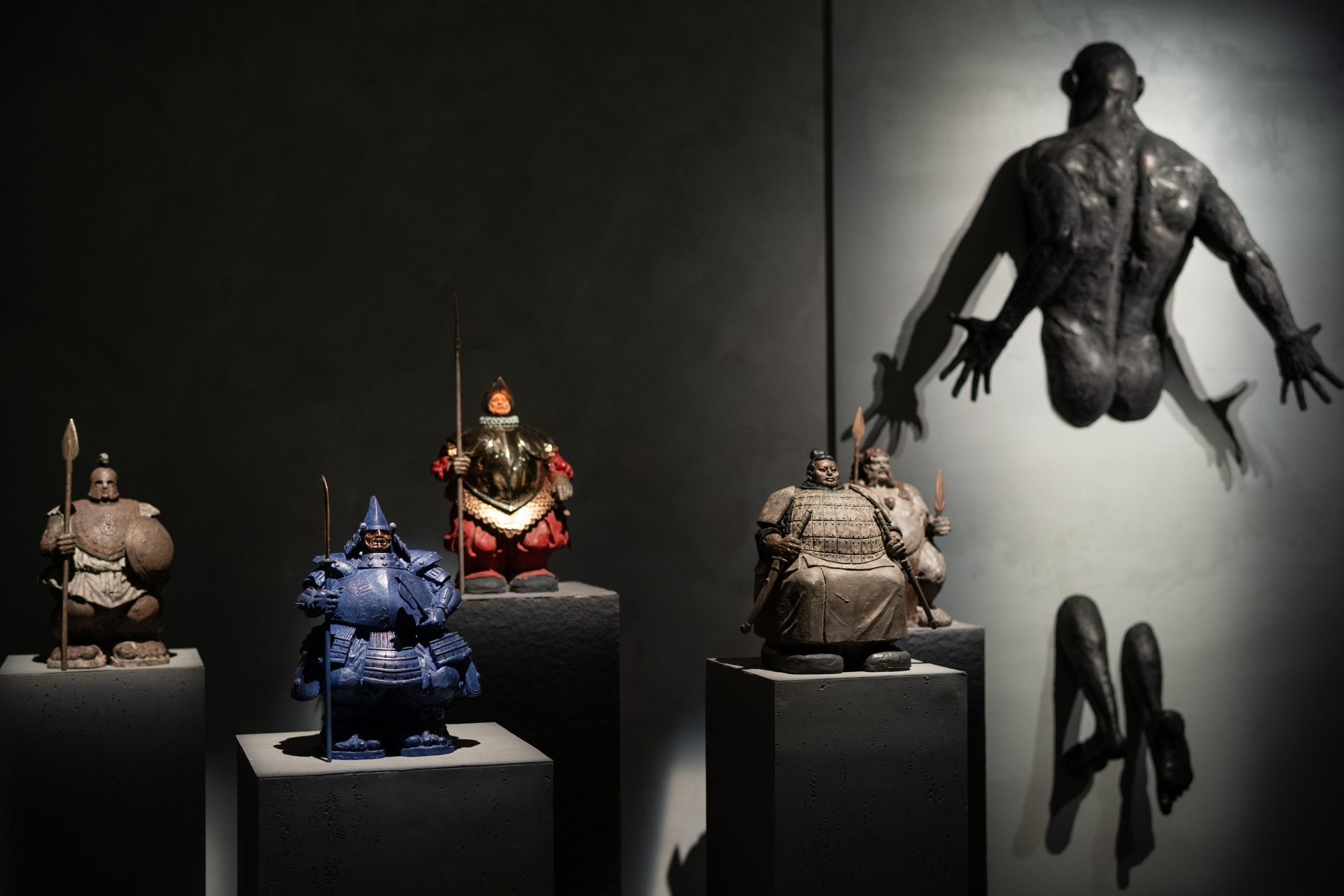
Pugliese's works are imbued with emotional authenticity. Bearing the imprint of life from his hand, his works capture intense psychological dimensions that invoke our shared experience, inviting viewers to face their own fears, desires, joy and beliefs.
Extra Moenia: Warrior of Freedom
For over two decades, my “Extra Moenia” sculptures have fought a lonely battle against walls, striving for a new reality.
- Matteo Pugliese
In Pugliese’s celebrated “Extra Moenia” series, human faces and limbs are caged in silent and ruthless walls, the deep wrinkles around the closed eyes are murmuring of pains buried at the bottom of soul, each tightly stretched tissue reveals a kind of innate uncompromising determination to fight for freedom. In over twenty years, this series discovers numerous facades of our struggle against the endless constraints in which we are all trapped. All figures that are fighting against the prison walls have classical heroic facial features, masculine and yet fascinatingly beautiful. The fleeting moments of an everlasting war are engraved on the delicate boundary between existence and nothingness. These figures, rooted in the sculptural tradition since Michelangelo, are anatomically precise and full of vitality and movement. The complex, layered texture of bronze, created by multiple patinas and the imprints from the artist’s hand, stands as a haunting mementos of endurance and free will.
Pugliese’s two latest creations are unveiled in this exhibition, representing a pivotal breakthrough in his “Extra Moenia” series.
A Matter of Trust is inspired by a childhood game where one person falls backward, relying on another person behind him to catch him. For the first time Pugliese’s human figure liberates itself from the constraints of walls, surrendering to fate and the unknown with faith.
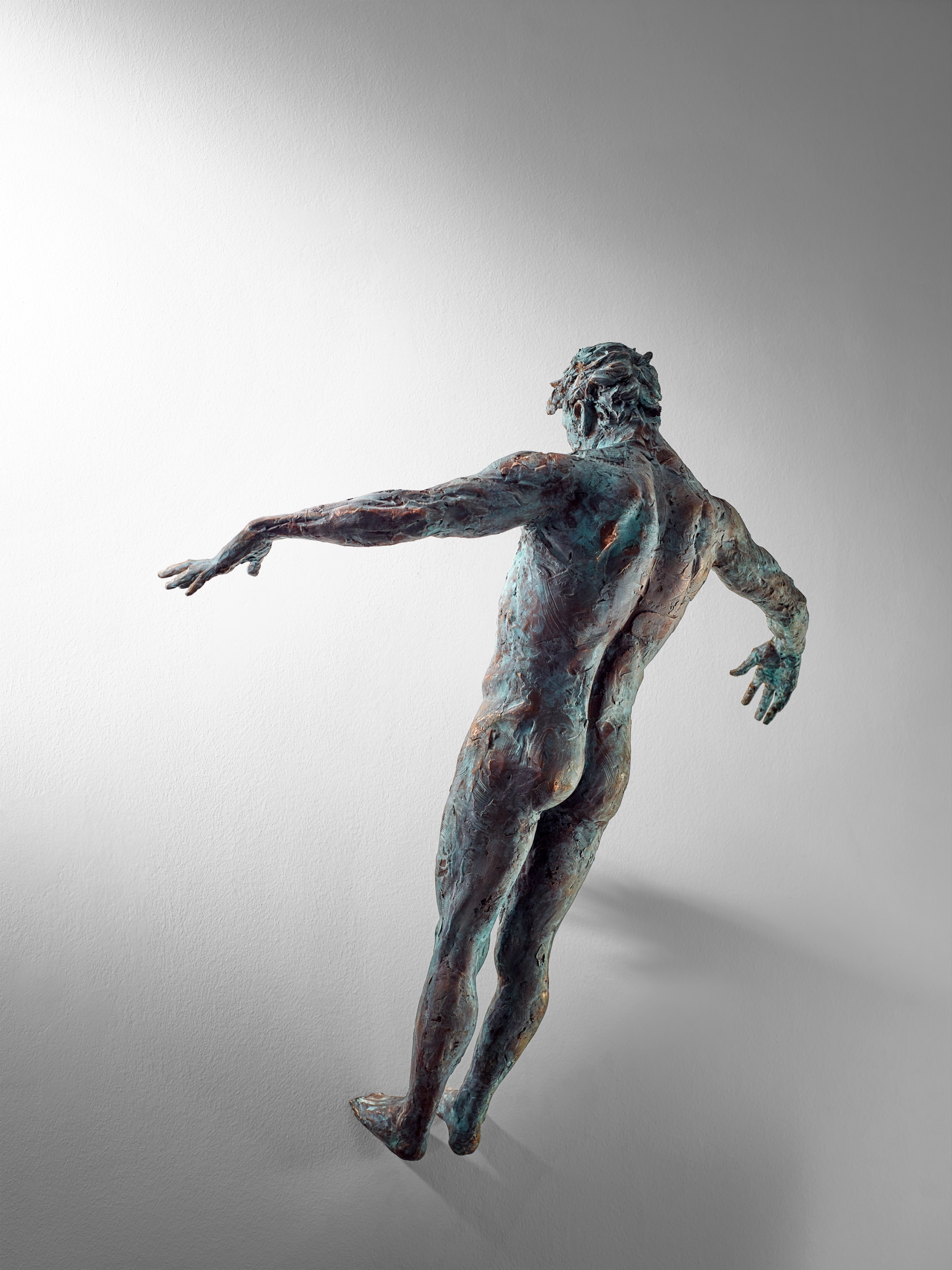
Edition # 7/7
Images: Kwai Fung Hin, ©2024 KWAI FUNG HIN
In Broken, Pugliese breaks down his beloved figures into fractures. This act of destruction, reminiscent of experiences of personal wounds, and also the restoration of ancient Greek and Roman statues, symbolises the necessary death before renewal - a memento of rebirth.
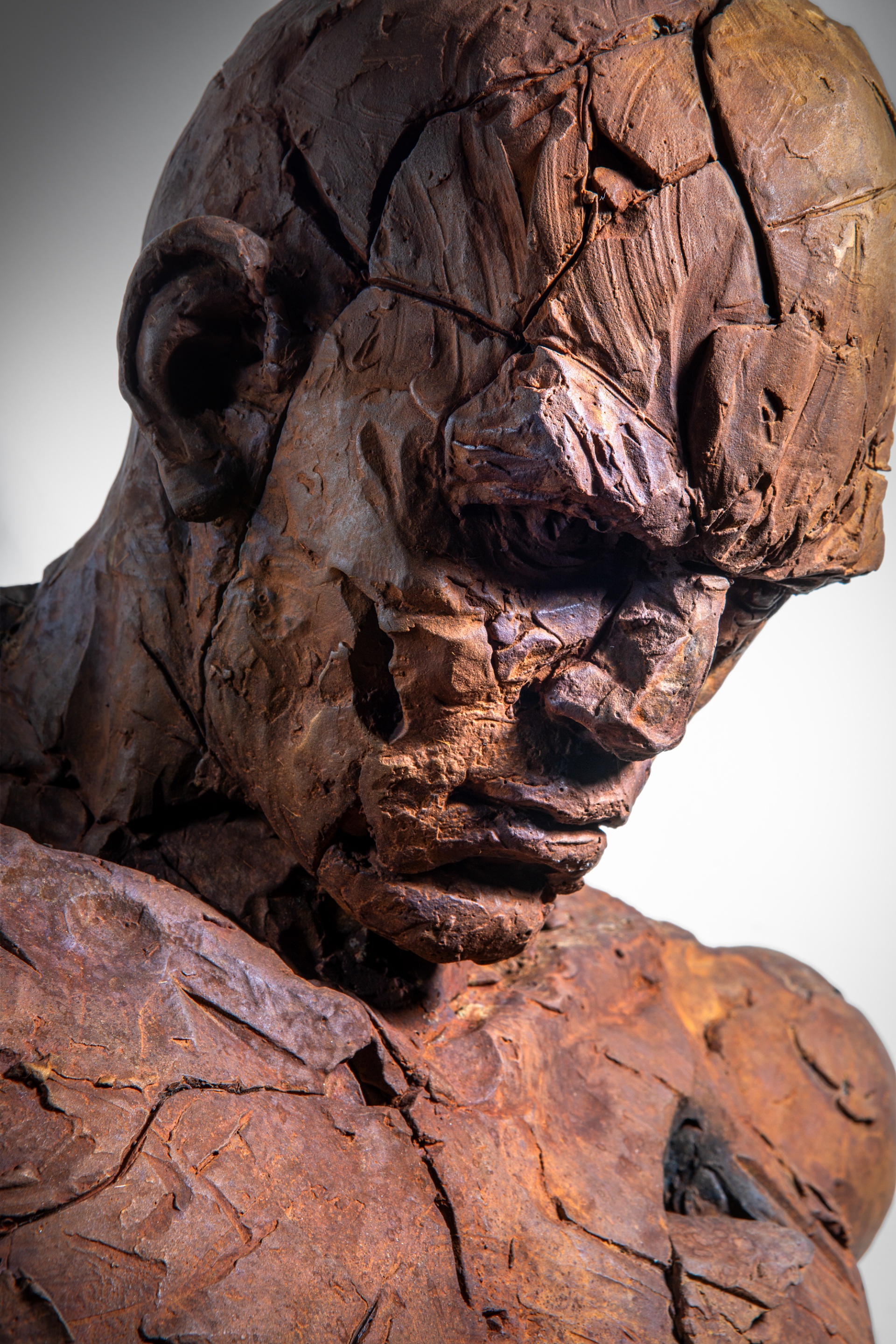
Edition # 1/7
Images: Kwai Fung Hin, ©2024 KWAI FUNG HIN
Guardians: Silent Protectors
...We will end up in different homes, some of us will perhaps cross the sea and end up in places that nobody could ever imagine. We will be a dispersed army, united by the people who have chosen us, who will have been chosen by us.
Listen to our silence.
I am here, I protect you.
- Excerpt from The Guardians by Matteo Pugliese
Pugliese’s “Guardians” stand in stark, exuding an aura of serenity and inner strength. With their full bellies, exaggerated feet, and armoured with unraised weapons, these figures embody resilience and fortitude.
Since the 1990s, Pugliese has drawn inspiration from a diverse array of cultures and spiritual traditions, including Tibetan, Mayan, Egyptian, Japanese, American, and African. By incorporating totemic protector figures from these civilizations, he taps into universal human desires for spiritual protection and the safeguarding of home. Adorned with intricate details such as chainmail armour, straps, coins, and screws, the Guardians act as spiritual protectors, reviving the essence of diverse cultures amidst globalisation.
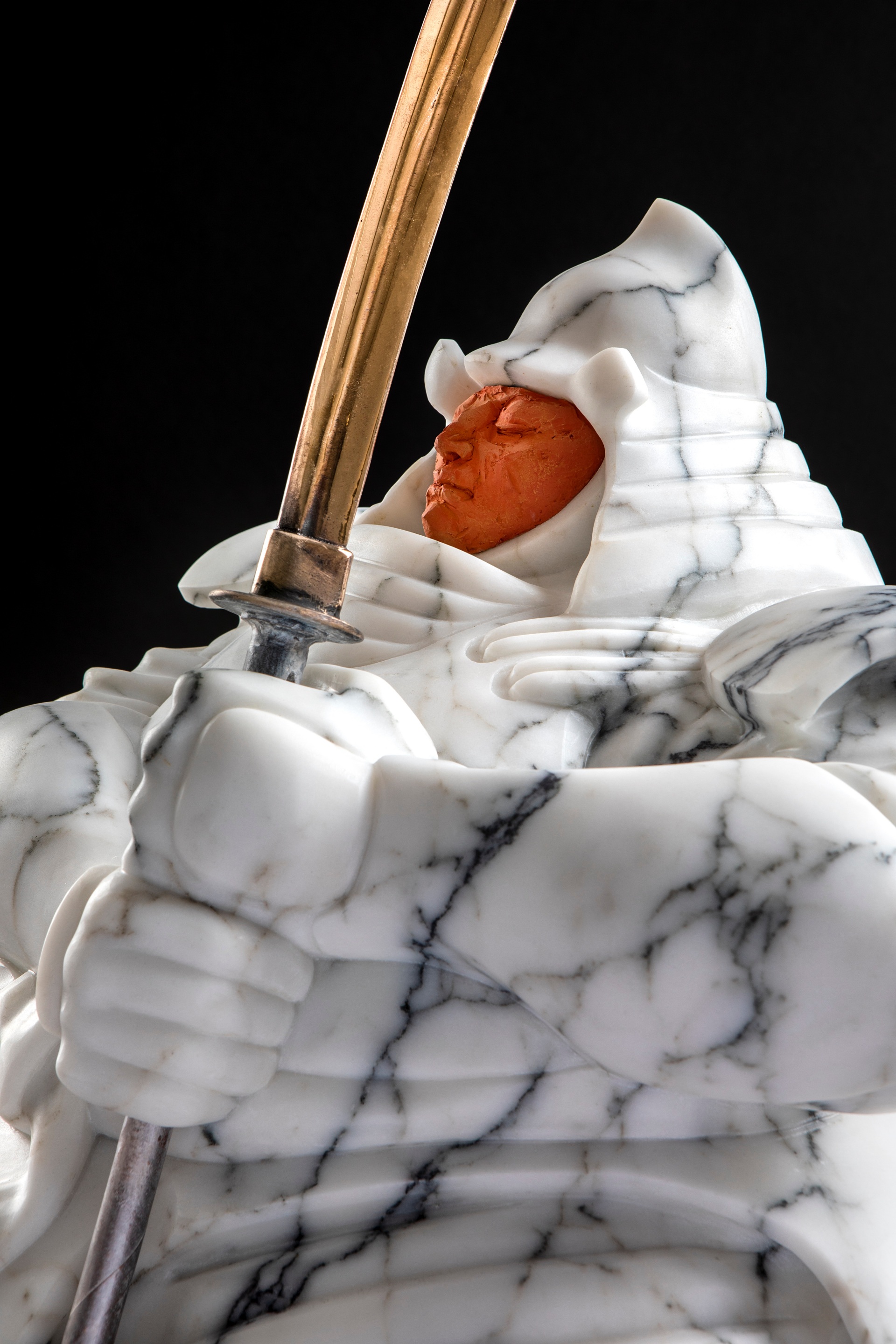
Edition # 2/6
Images: Kwai Fung Hin, ©2024 KWAI FUNG HIN
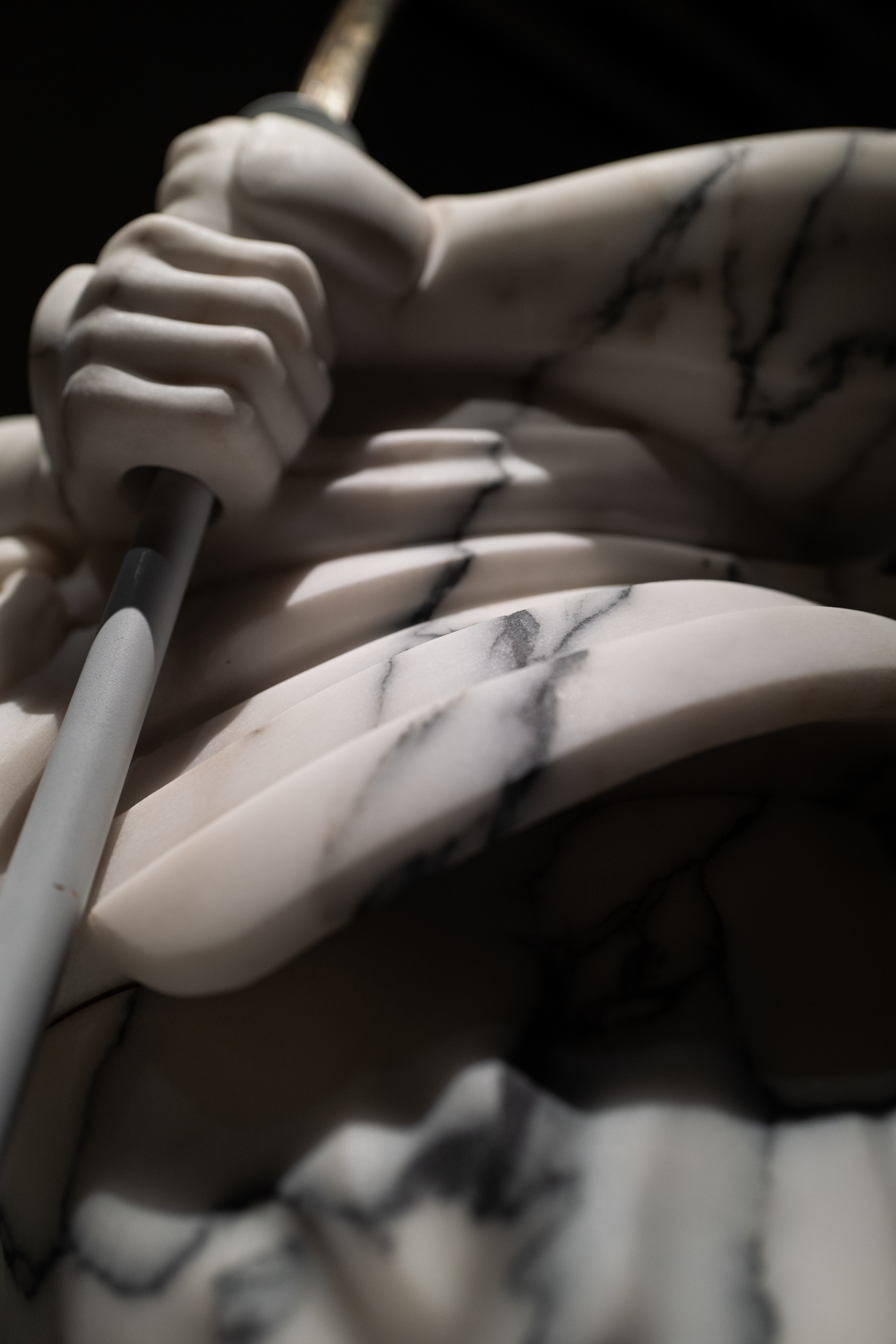
Edition # 2/6
Images: Kwai Fung Hin, ©2024 KWAI FUNG HIN
These figures are made of clay, bronze or ceramic, even marble. The nearly metre-tall Samurai Guardian (VIII), for instance, is carved from white-veined Paonazzo marble, a challenging material favoured in ancient European architecture and Renaissance sculpture for its associations with power, wealth, and devotion.
Created in 2023, the debut “Pachamama” series is named after the spirit of “Mother Earth” which was honoured by the indigenous tribes of the Andean highlands in South America, and was regarded as the source of the nurturing essence of nature. Departing from his familiarity with bronze, Pugliese ventured to Val Gardena, a region renowned for its wood carving tradition dating back to the 17th century, to create sculptures in walnut wood for the first time. This work reflects the artist's deep contemplation on the harmonious coexistence between humans and nature.
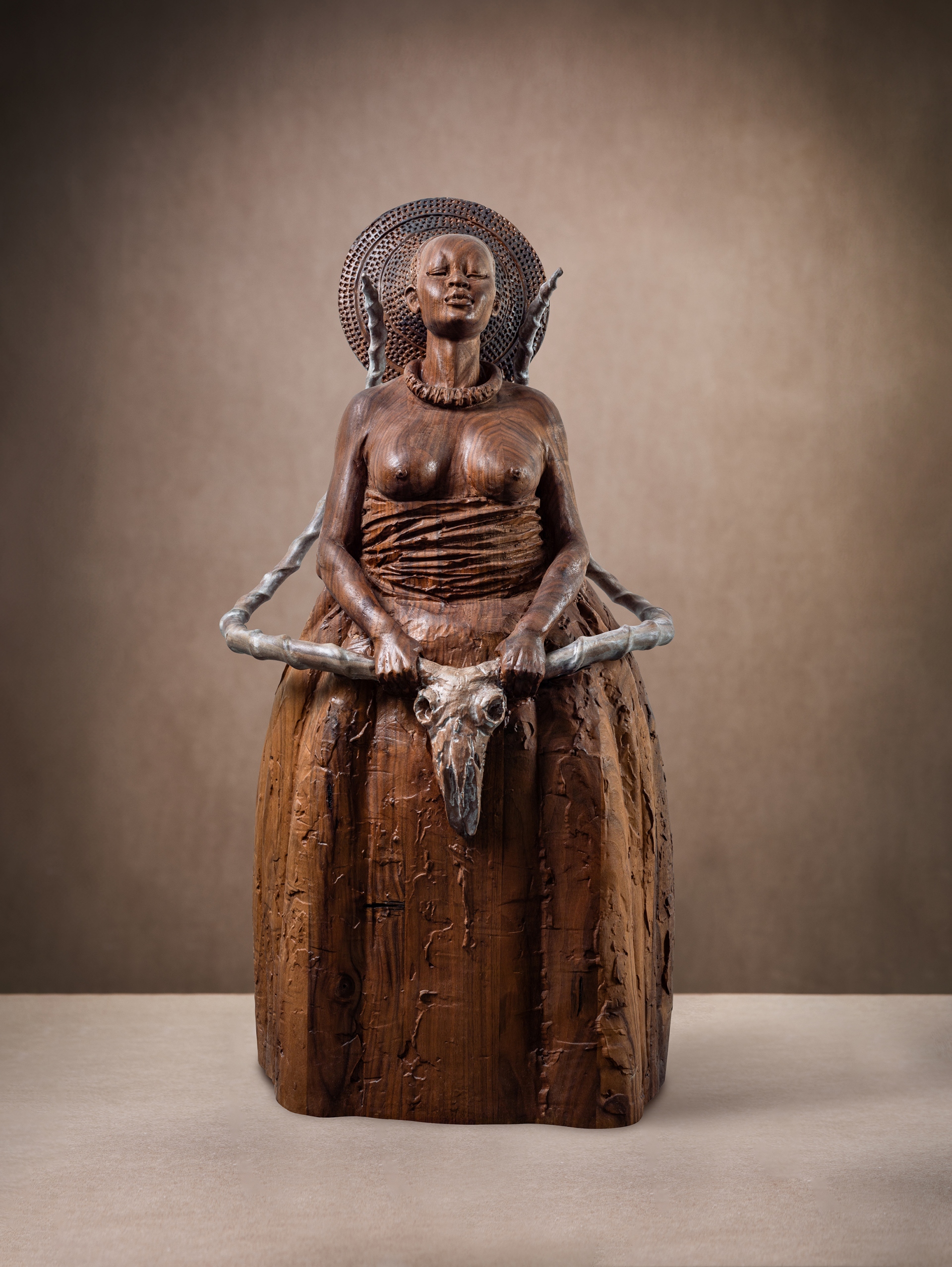
Walnut wood, 90 x 44 x 34 cm
Edition # 1/7
Images: Kwai Fung Hin, ©2024 KWAI FUNG HIN
Beetles: Keeper of Joy
...After so many years, I went back to playing with beetles. Perhaps it’s to reconnect with that suspended time, or to resume that interrupted game and recover that distant spirit. Or maybe, dear beetles, it's just a tentative plea for indulgence...
- Matteo Pugliese
Created since 2011, the “Beetles” series preserves Pugliese’s gratitude for his memorable childhood within jewel-toned ceramic shells commemorating life’s fleeting yet precious moments of transformation and growth, as well as a reminder of our origins.
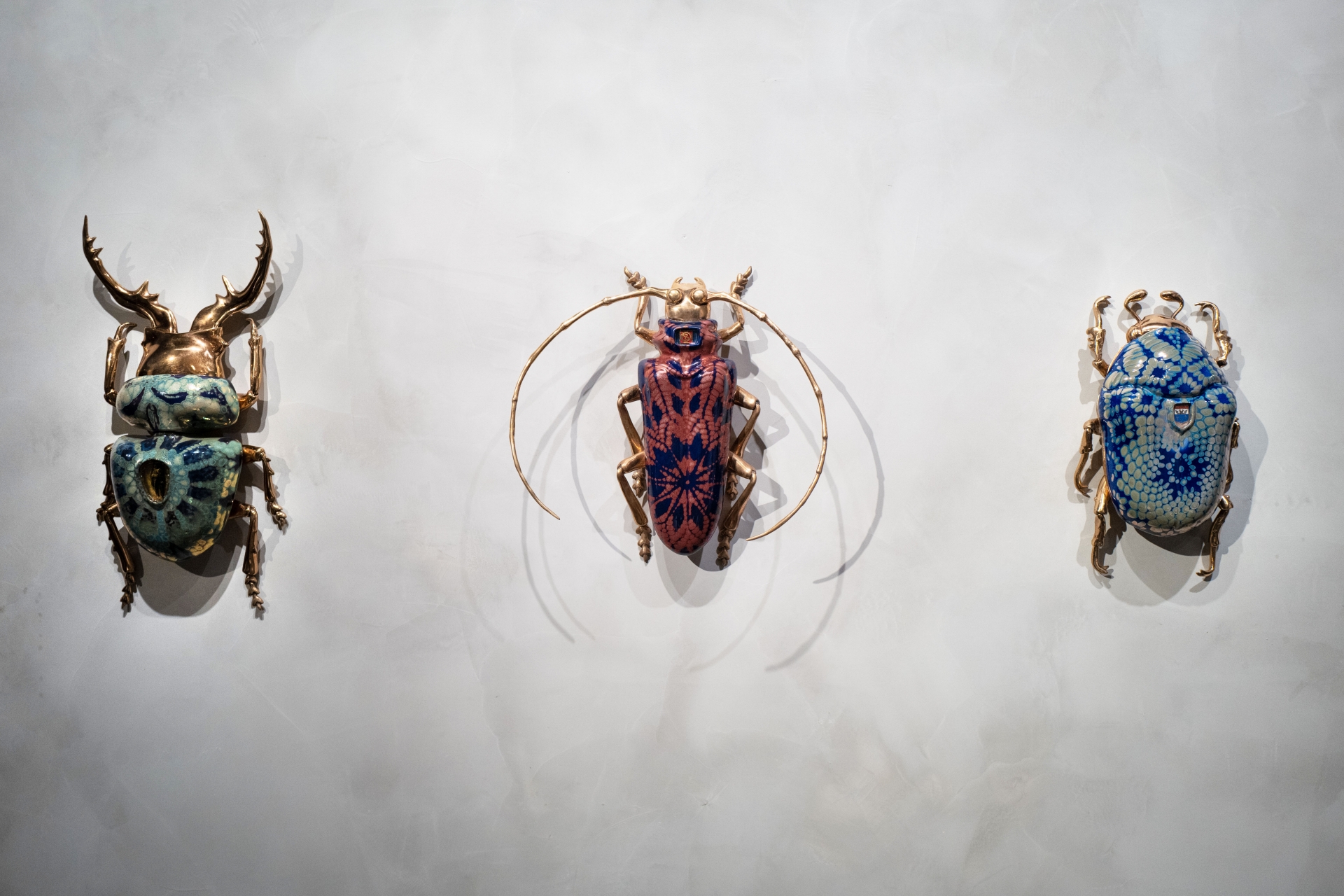
Pugliese revisits the summers of his childhood in Sardinia, where he and his cousin painted vibrant patterns on beetle shells, causing confusion among amateur bug enthusiasts who thought they had found rare specimens. These tender memories now fuel his artistic energy, turning ordinary moments into precious gems.
Sculpted by Pugliese from bronze and ceramic with bright and tactile finishes, each Beetle contains a whimsical souvenir from his youth, such as thumb-sized figurines of Darth Vader and a Queen Elizabeth II stamp. He playfully names these sculptures by modifying old Latin binomial naming conventions for species.
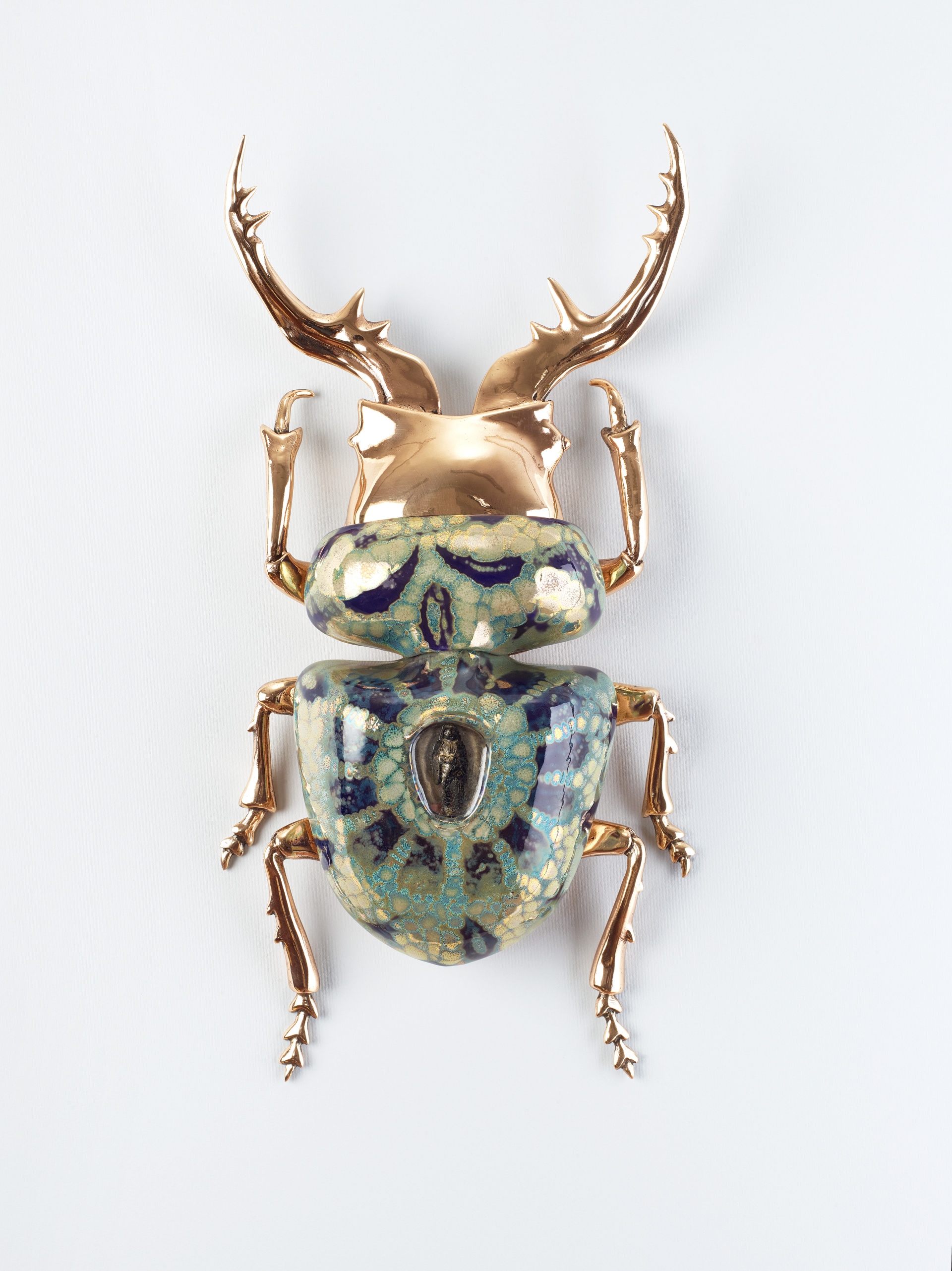
In addition to the standard processes of shaping and glazing, an age-old “third firing” method imparts metallic shades to the shell, producing an effect akin to a celestial tapestry.
In Memento, we witness the enlightening discoveries from Matteo Pugliese’s soul voyage, exploring themes of vulnerability and resilience, individuality and ancestry, faith and rebirth. Perhaps the tension in the “Extra Moenia” series may find purification through the steadfast determination of the “Guardians” and the powerful remembrance invoked by the “Beetles,” ultimately achieving a sense of self-reconciliation. Pugliese’s sculptures manifest as intimate visual mementos - at once universal and personal, ancient and renewed.
Showing until November 2, 2024, at Kwai Fung Hin Art Gallery.
Can you share with us your sentiments and vision behind this exhibition?
I tried to give voice and shape better to several periods of my life, defining my emotions and feelings. Some of these creations reflect the changes and reflections in my life, such as thoughts as a father, my worries about the future, climate change in the environment and the world my daughter will inherit. The Pachamama series expresses this element of nurturing. In the Guardians, I wanted to create these figures that protect you and are here to defend our sacred spaces, be it the home, the temple and the family. This one, like all the sculptures I make, I make for necessity, not because I want to give a message to the world - I am not that arrogant. After my research, I discovered that ‘guardians’ wasn’t just my idea (I’m not that original). If you look at human culture, in every part of the world, and in every moment of history, there is a figure that’s placed by the entrance as a ‘guardian’ - in the temple, the pagoda, the church, etc. That’s why I’m incredibly inspired by different cultures and it’s impressive for me to discover that this is something that really belongs to human history.
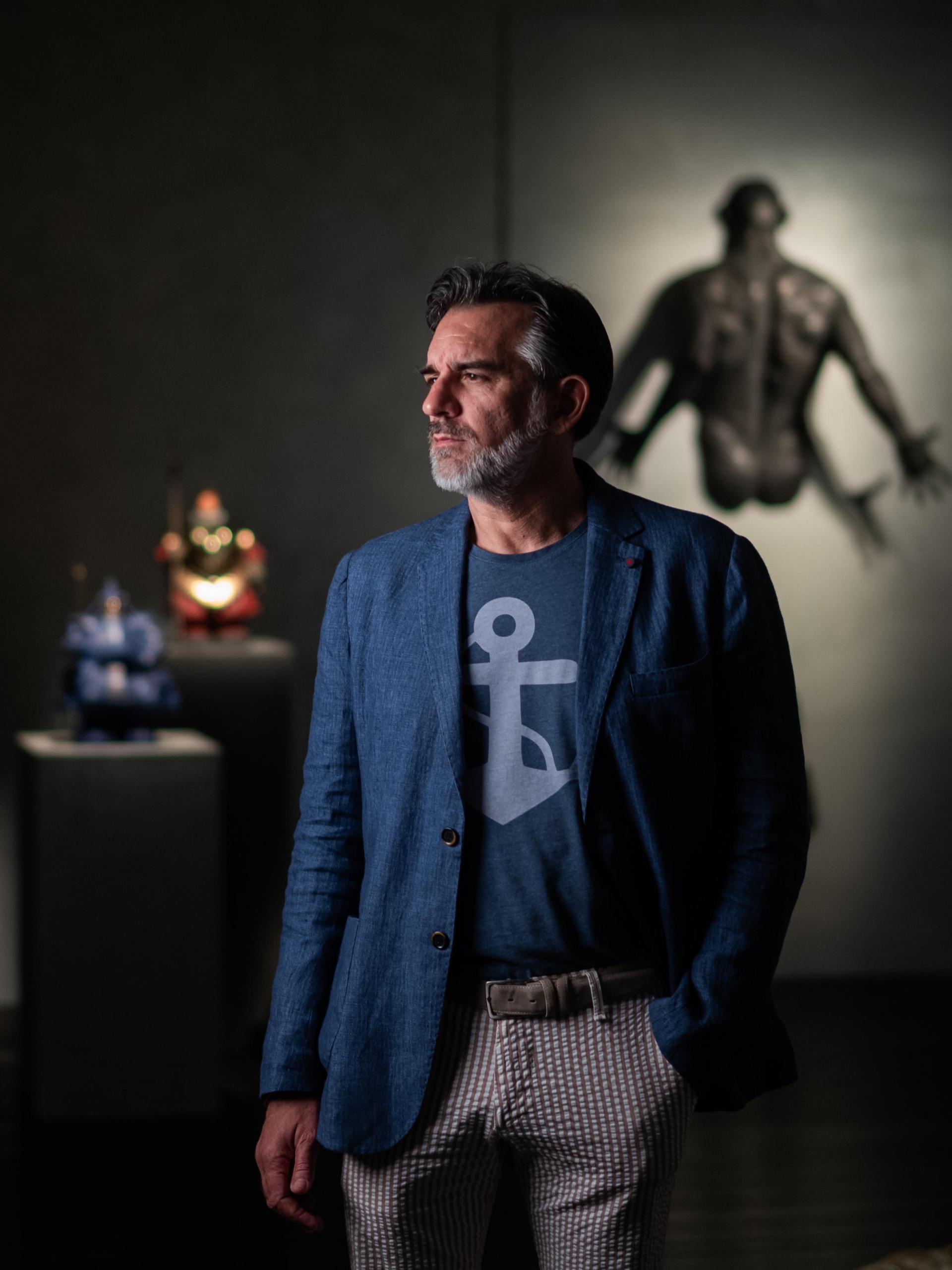
Tell us some of the details behind the pieces in the collections?
Throughout this exhibition, my work is very free - I’ve had the freedom to create. In the Guardians, they are sculpted to be fat, as I didn’t want them to look aggressive but protective. They’re not moving with a weapon, symbolising a sense of peace. They are saying, I’m here, I'm calm and I’m here to protect you.
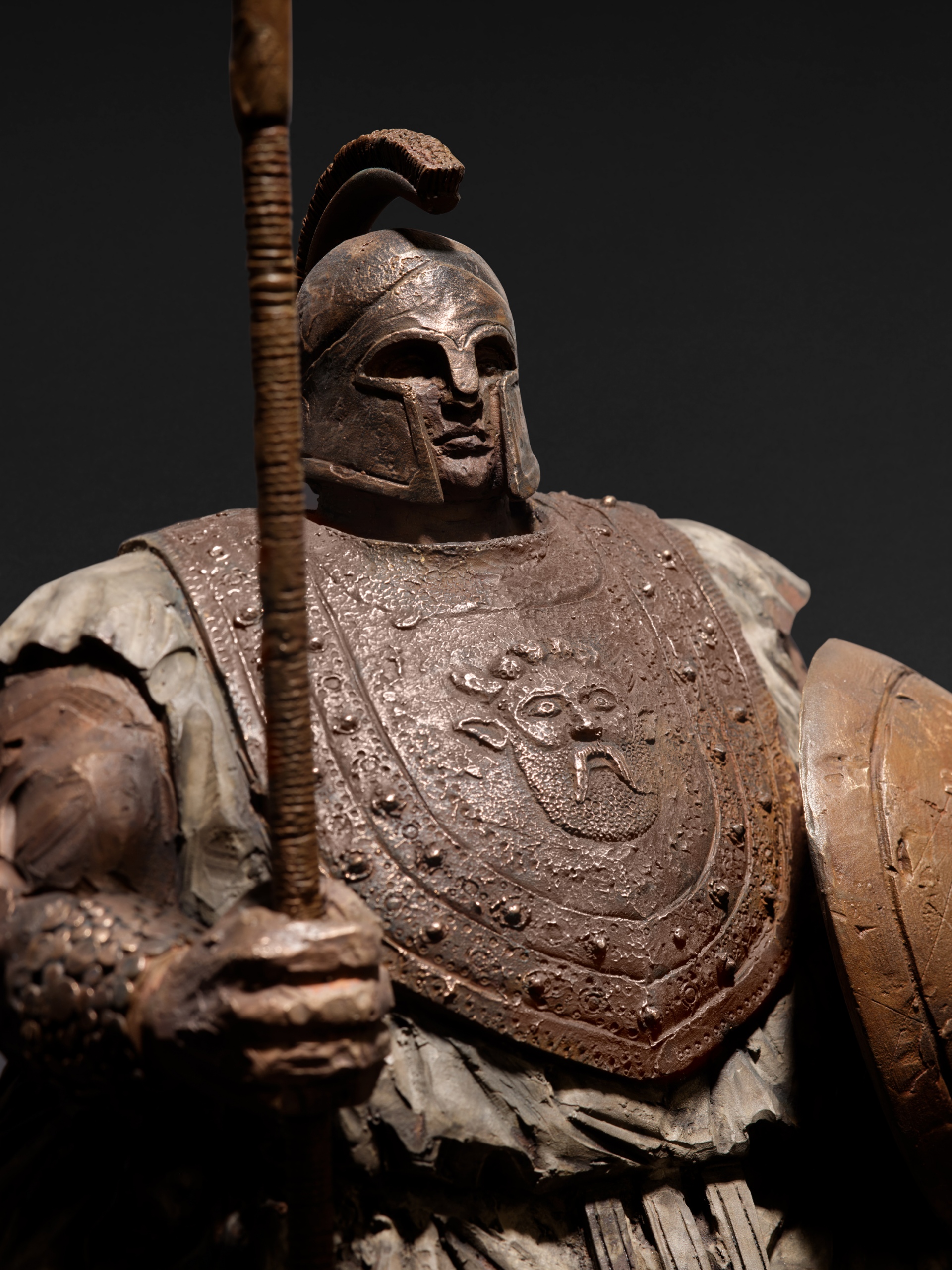
Edition # 7/7
Then in the Beetles, these are made in bronze and aluminium while the shell is made in ceramic. They are made one by one, and impossible to make the same so each is unique and different. Then inside the shell, I’ve placed a small object that was important to me when I was a child (these are not valuable in terms of money but valuable in terms of memories) - this is therefore a homage to my youth, where I used to play on the beach in Sardinia. This is a remembrance back to those days of my teenage years, when I had my whole life in front of me with no worries.
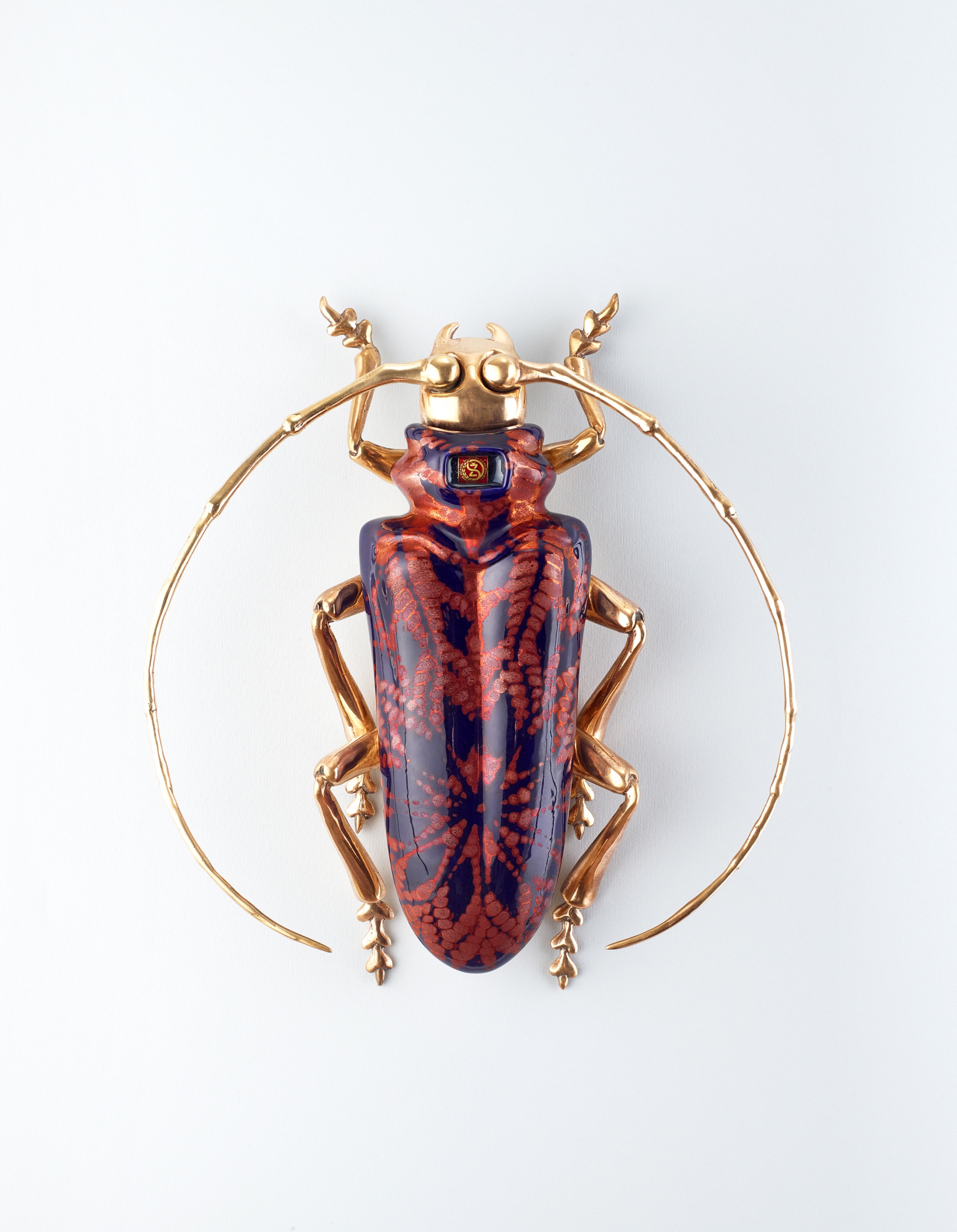
How do you feel the art market has evolved and how does this affect you?
I feel sometimes that the art market can destroy an artist. Some may find something that works, and they keep doing that same thing for the rest of their lives. This is a trap of course. It makes one lose their goal, their vision and more… So while they can probably sell their artwork for much more (as this is what the art market is asking of you), they are in fact not going anywhere. For me, I always prefer to start new. Whether my new collections will be accepted or not, we will see, but that is not something that is first priority for me right now, at this stage. What I like most about my work is that I’m able to make whatever I want, and focus on what I feel is important. In Pachamama, for the first time in 25 years, I started working on the female figure (previously, I had always sculpted the male figure). And I decided that I wanted and it was a necessity to sculpt the woman/ the female figure and these are very different. Different in a way I like because when my work is not recognisable, I see that as a good thing.
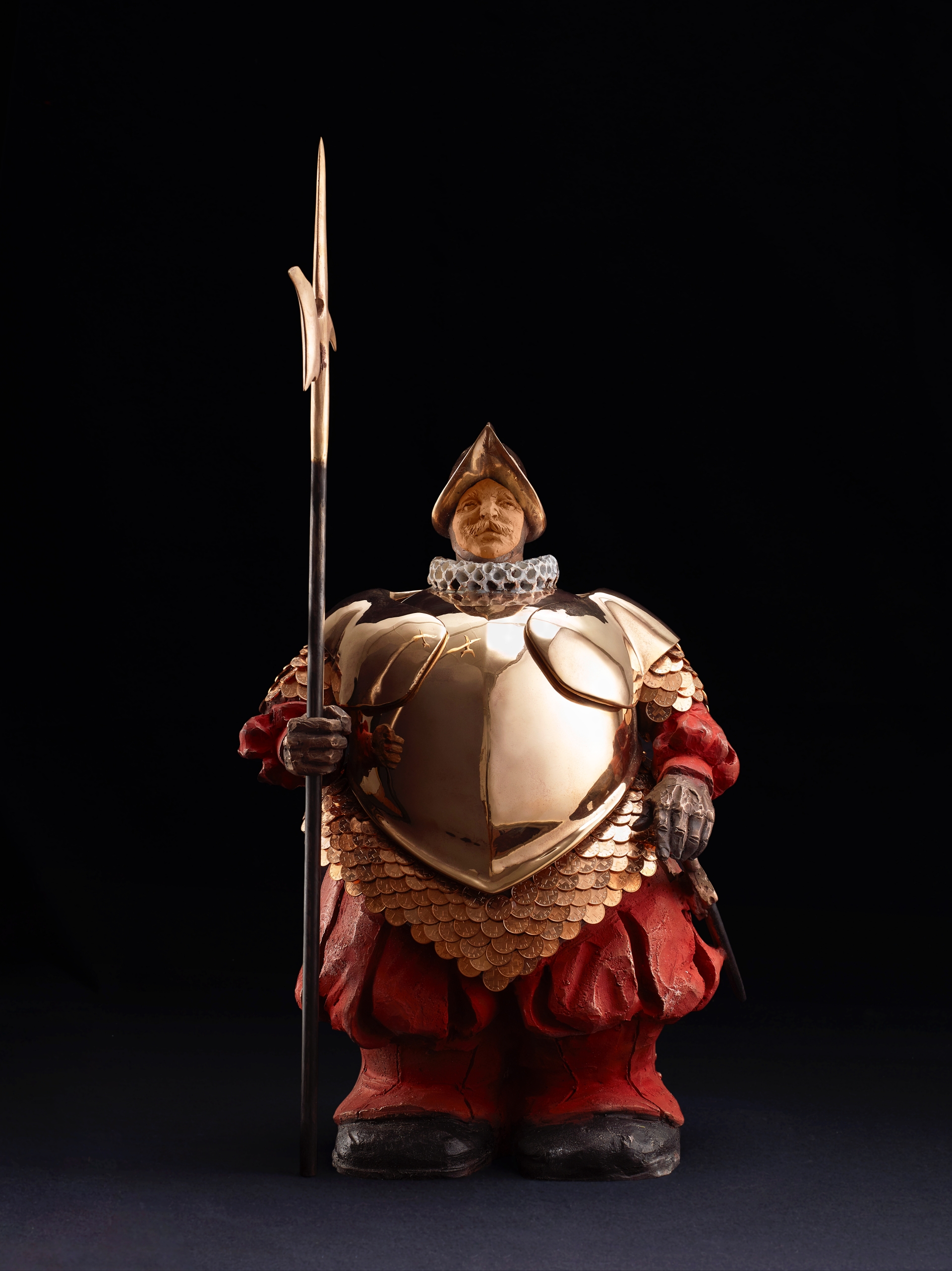
57 x 35 x 28 cm
Edition: 7 + 3
How important is being recognised?
I’m not at all focused or ambitious on my work being ‘recognisable’. The freedom to create is something that keeps me alive, passionate and doing what I do. Otherwise it would be so boring, repeating the same work every day. So I prefer to sell less but to be freer.
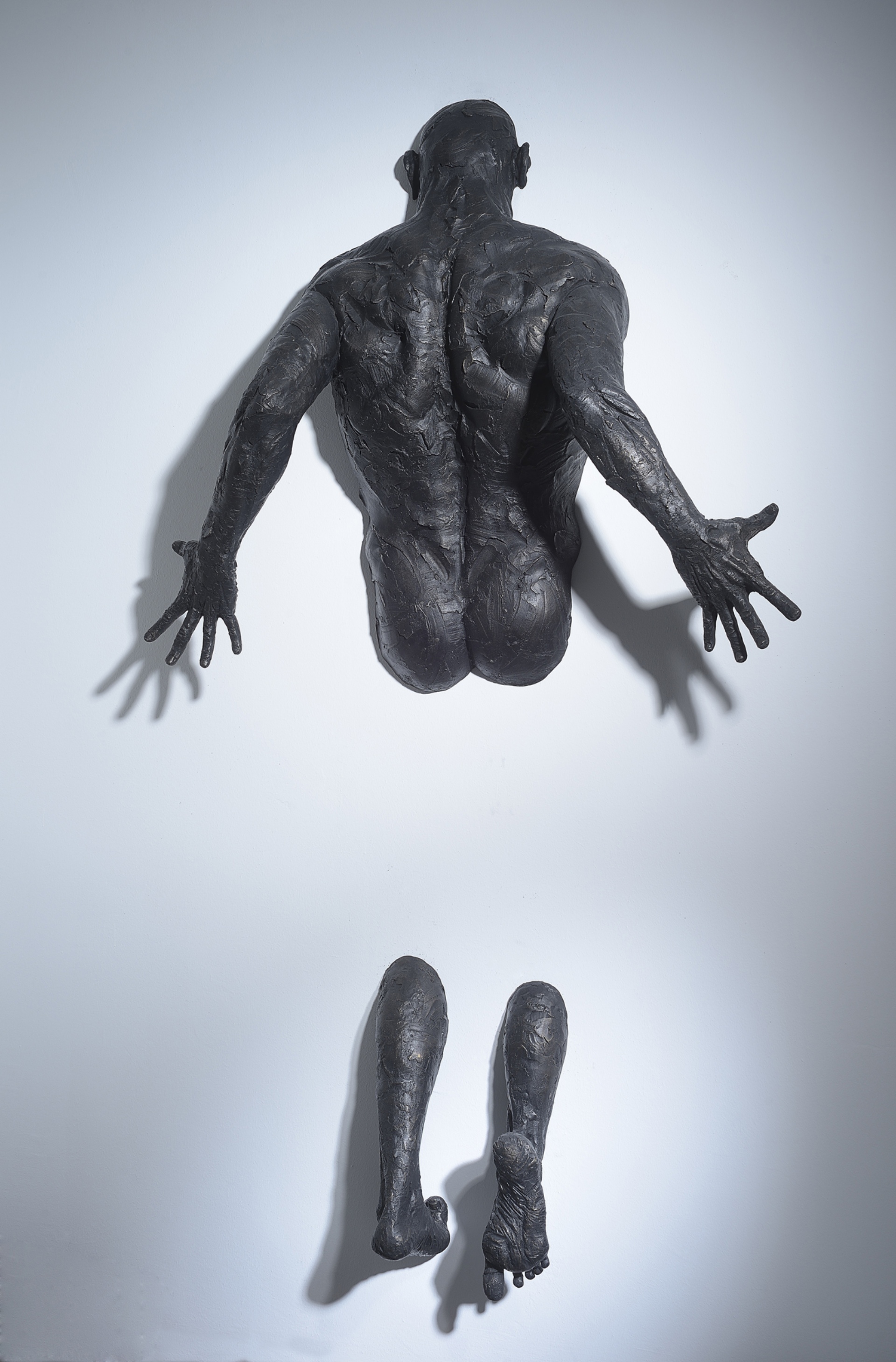
200 x 120 x 38 cm
Edition: Edition 7 + 3
Tell us about the materials you craft with?
The freedom to create gives me the opportunity to use different materials which is another joyful part of my job. I am very curious and I have the fortune to live in a country that has a very high level of craftsmanship. I’ve worked in Venice for blown glass and marble in Carrara, Italy. I like to discover things and keep the art of craftsmanship alive otherwise we may lose that. So my work also contributes in paying gratitude to the quality of craftsmen and to rejuvenate the traditions and their art. This is my wish…
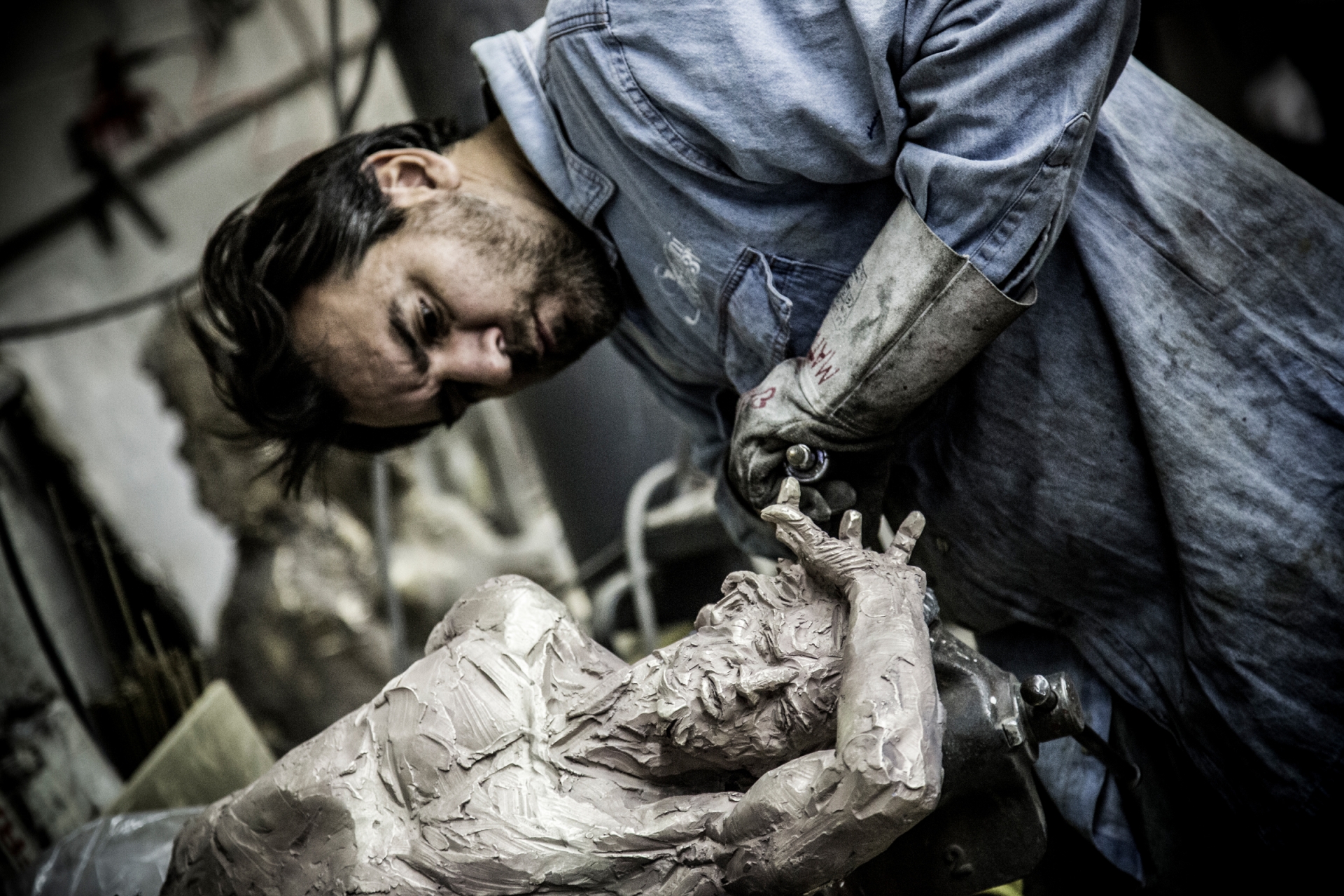
Can you share the trials and tribulations on your path to becoming an artist?
My original plan was never to become an artist. I received a lot of resistance, especially from my family. I think for most families at the time, the mantra was that you cannot live as an artist. So after graduating from university, I started doing some work in the journalism field, which was something that didn’t satisfy me at all. After a few years of this and then in advertising, I decided to organise my first exhibition. So I borrowed some money from the bank, and with the help of some friends, we rented a place in the middle of Milan. We thought this would either be successful or we’d lose everything. I was lucky. We didn't have a press office, but the newspapers and magazines gave me good coverage and it was a great turnout. It was also funny because for this exhibition, I filled in the shoes of the artist, the gallerist and the event organiser, together with my friend. But overall, it was a fantastic experience, and the amazing energy I felt that night made me feel I had the chance to pursue this as a career, despite my parents objections and what society expected of me.
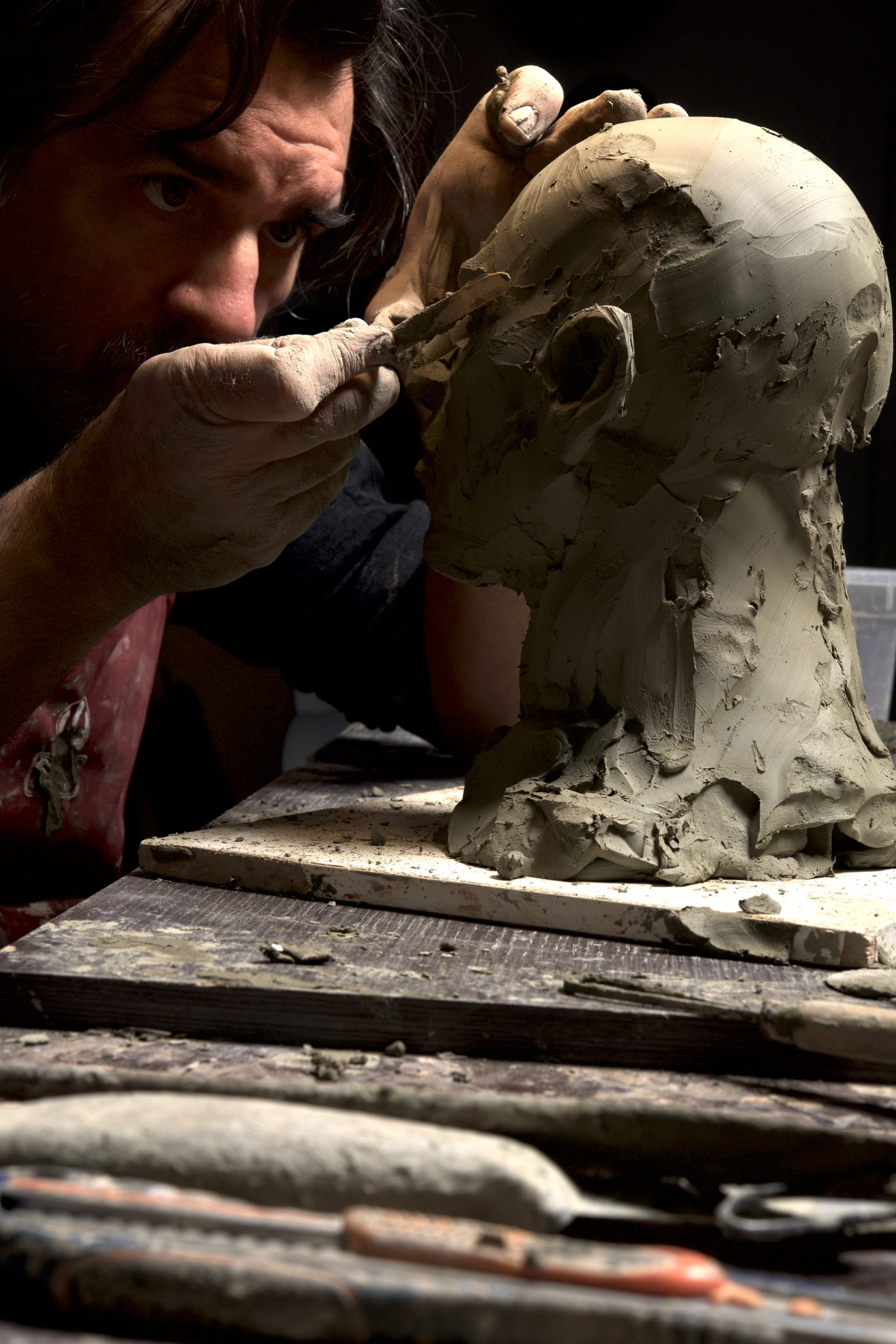
After a couple of months, I went to Brussels and presented my work to another gallery, who were also unexpectedly open. They told me to send over some works and that there was a fair in a couple of weeks. They sold two sculptures at the fair and our collaboration started. From that point on, it was an easy way up. As with many things in life, it’s perhaps the first step that is always the hardest. Moreover because I was against the empire - I fought a lot with my father and my culture. I express that a lot in my piece with the man escaping from the wall, and it’s not a coincidence that I started with that piece in my collection. There’s that constant tension - the wall gives you protection, but in the same regard, the wall is also lifeless. You cannot leave and you don’t have the chance to live and to experience, whether it’s good or bad. So my objective was to push back and to escape from this wall. Also, when I lived in Sardinia, I had a joyful childhood, but when I was a teenager, I felt a bit like I was in a cage, and trapped, facing many narrow minded people (we’re talking about the mindsets of 40 years ago). So as soon as I finished high school, I went to Milan for university by myself.
There are the recurring themes of nurture, protection, resistance and breakthrough in your work. Are these spurred by life experiences?
When I went to Milan for university, I was completely unsure what to do afterwards. I didn’t think about becoming an artist at all. But eventually, I was finally convinced that I had to take this route, otherwise I would forever be a flower that didn’t open. It was also important for me to gain that self esteem that was completely lacking. I recall the figure of my father pushing me into a corner and I knew that had to change.
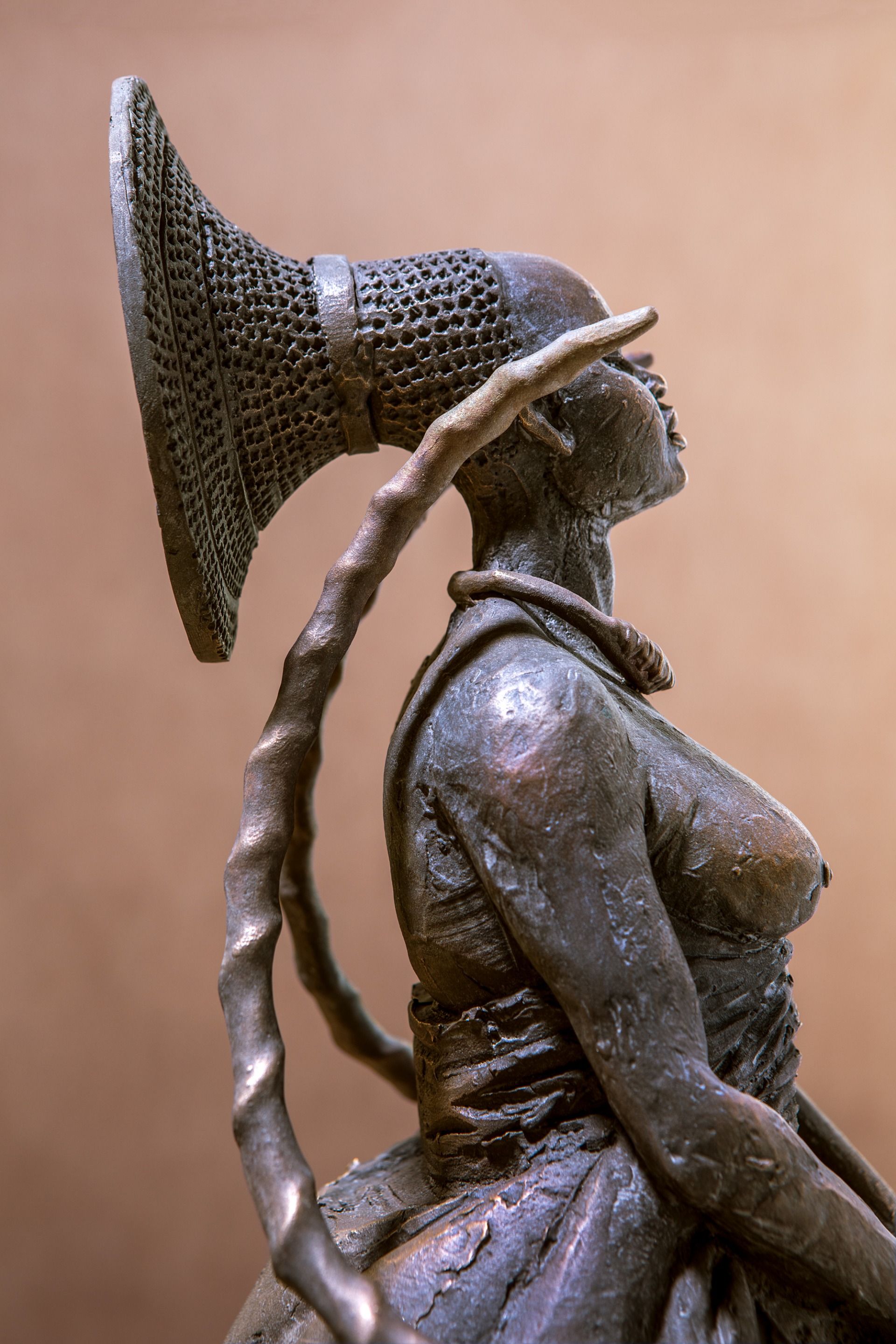
Walnut wood, 90 x 44 x 34 cm
Edition # 1/7
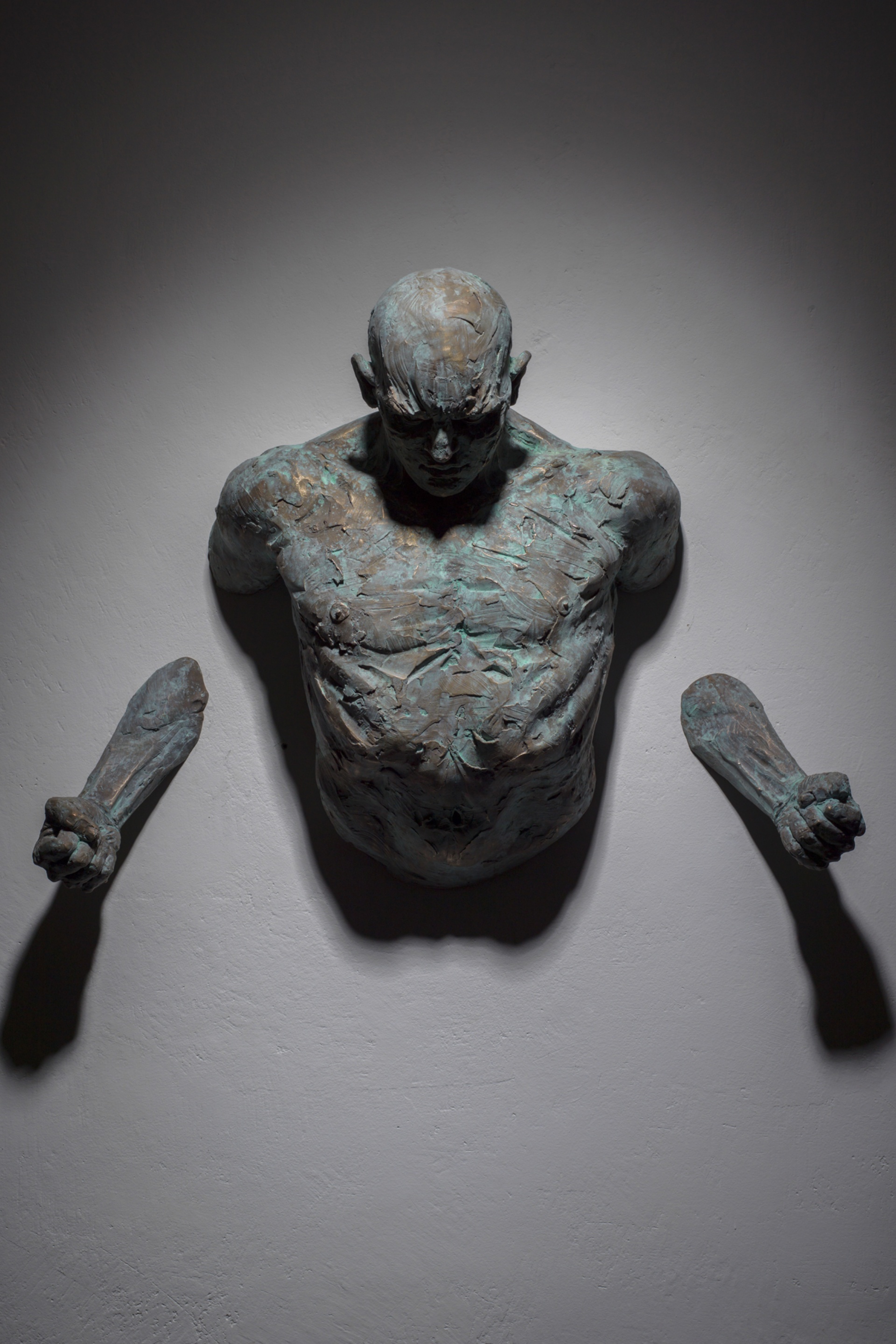
64 x 72 x 29 cm
Edition 7 + 3





